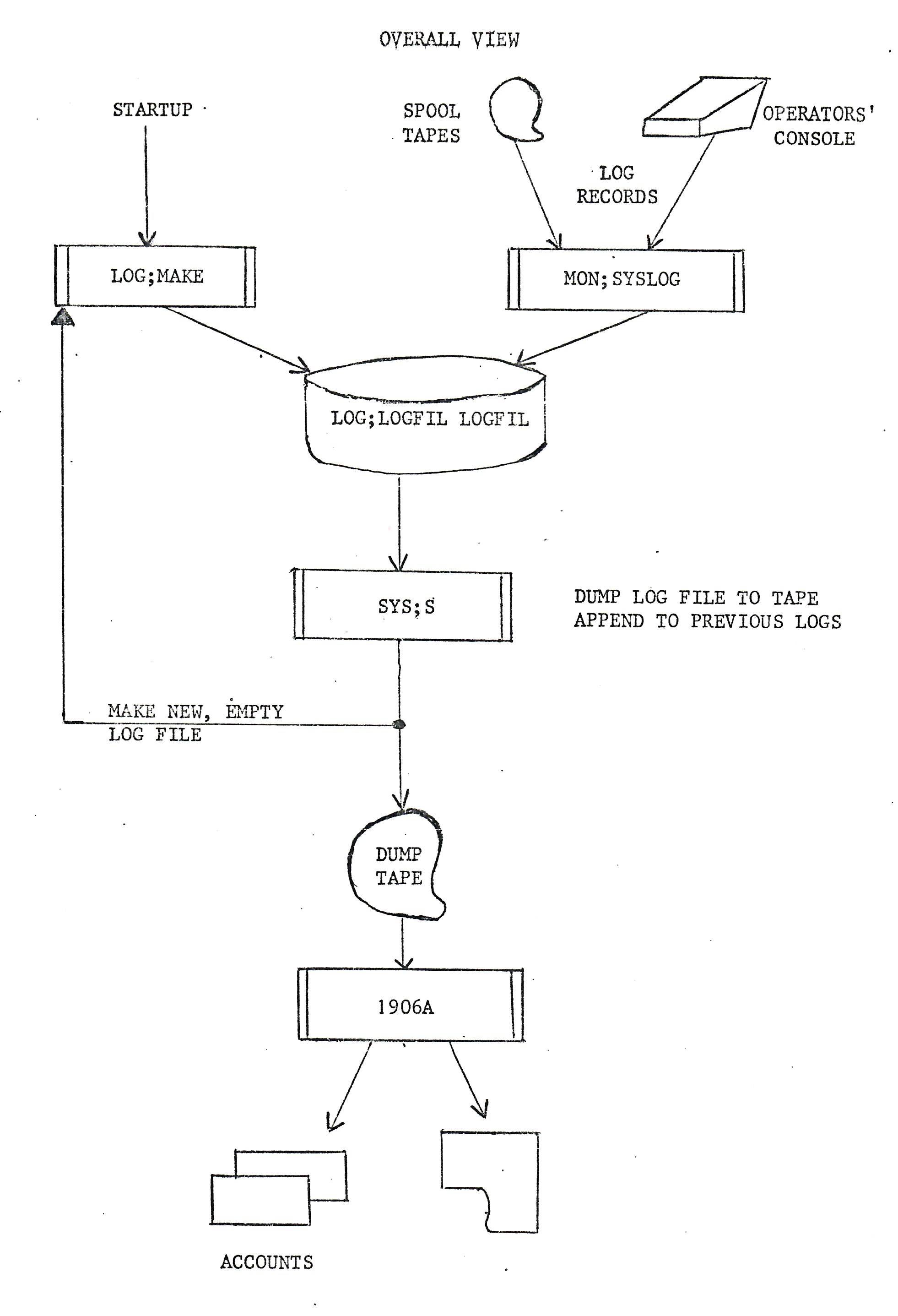

Accounting for FR80 usage is essentially a two stage process. Stage one is the collection of raw data such as the time and film taken to process each job. Stage two is the application of a charging scheme to this raw data to produce invoices.
The aim of the FR80 Logging System is to collect this raw data (stage one) in a form that can be transferred to the 1906A, where the actual accounting will be performed.
The FR80 Logging System causes data about FR80 jobs to be written to a special disc file called LOG;LOGFIL LOGFIL. This file is periodically dumped out to a magnetic tape. Each week this tape will be processed by the 1906A to produce the 1906A accounts.

Notation: In the following examples of console dialogue those lines input by the operator are shown prefixed by -> The -> itself should not be input.
When loading the FR80 software from scratch a new log file must be created with the current date as follows:
-> LOG;MAKE$J
*MONITOR
-> DATE - DD,MM,YY/26,09,75
-> GO/
27.0 FRAME 0
* (MS) - OLD LOG DELETED
(MS) - NEW LOG FILE CREATED
* this message may not always appear.
Note that LOG;MAKE does not use the Monitor Display.
Jobs on spool tapes will thereafter write log records to the log file automatically. The operator will see when the logging program is running because its name, "SYSLOG", will appear on the console printer.
The operator may manually enter comments into the log file by typing:
-. GCOMMENT / operator's comment
This may be done by putting up switch 5 when SYSLOG runs so that MONITOR asks for console input, then typing the comments(s), followed by GO/.
When the log file is nearly full, a message is given:
(CONSIS) - WARNING: LOG FILE NEARLY FULL
The operator should then take the earliest opportunity to dump the log file to magnetic tape according to paragraph (2.4).
Should the log file become full the message:
LOG FULL: <log record>
will be printed. The operator should immediately dump the log file to magnetic tape, create a new log file (paragraph 2.1) and type into the log file (paragraph 2.2) the following:
-> GCOMMENT /'log overflow records'
-> GCOMMENT / log record from first 'log full' message
...
-> GCOMMENT / log record from last 'log full' message
-> GCOMMENT / 'end of log overflow records'
When the log file is nearly full it should be dumped to tape. As it is possible that the log may be filled several times before its transference to the 1906A, the dump tape will consist of several log files, appended one after the other.
To dump the log file load the current dump tape and then type:
-> S $ J
DATE?
-> today's date and time plus comment if needed
OK
-> E (moves tape past previous.dumps)
OK
-> FLOG;LOGFIL LOGFIL
then check that the dump was successful by typing:
-> T
which will cause an index of the dump tape to be printed on the console. If the dump was successful, clean out the log file by running LOG;MAKE as shown in paragraph 2.1.
The log program, SYSLOG, constantly checks the validity of the log file. Should a fault be detected, an explanatory message followed by "FATAL ERROR" will cause the system to return to DEBUG. If such a situation occurs during the day, the operator should inform either JMR or RWW immediately and do nothing until they clear the fault.
If such a situation arises during the night the operator should immediately dump the log file to the log dump tape (paragraph 2.4) and make a new log file (paragraph 2.1). A note of the error and the state of the machine at the time should be left for RWW.
The operator may view the contents of the log file by using Disc Audit as follows:
-> F $ S -> LOG -> LOGFIL LOGFIL $ S -> N (repeat to step through the file)
Under no circumstances should the operator wipe the disc clean. When any changes to the disc contents are to be made, or the FR80 is to be given to anyone else, then the log file should be dumped to the current dump tape and a new one made.
The log file cannot be dumped and restored. This is because it is unlikely to be restored exactly as it was before dumping.